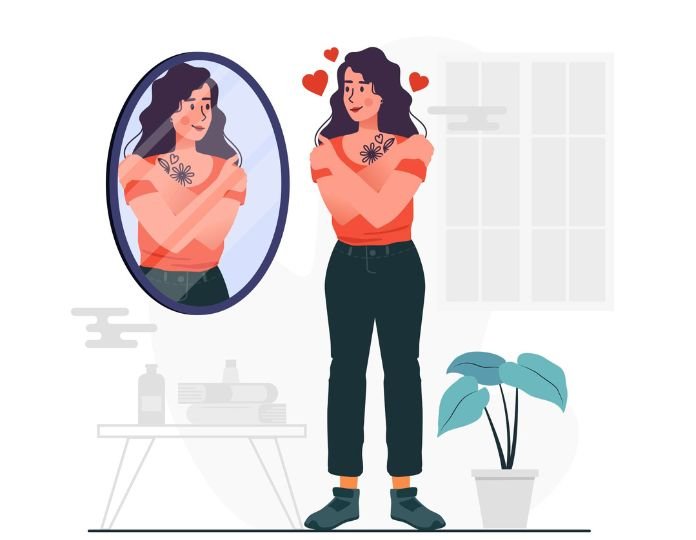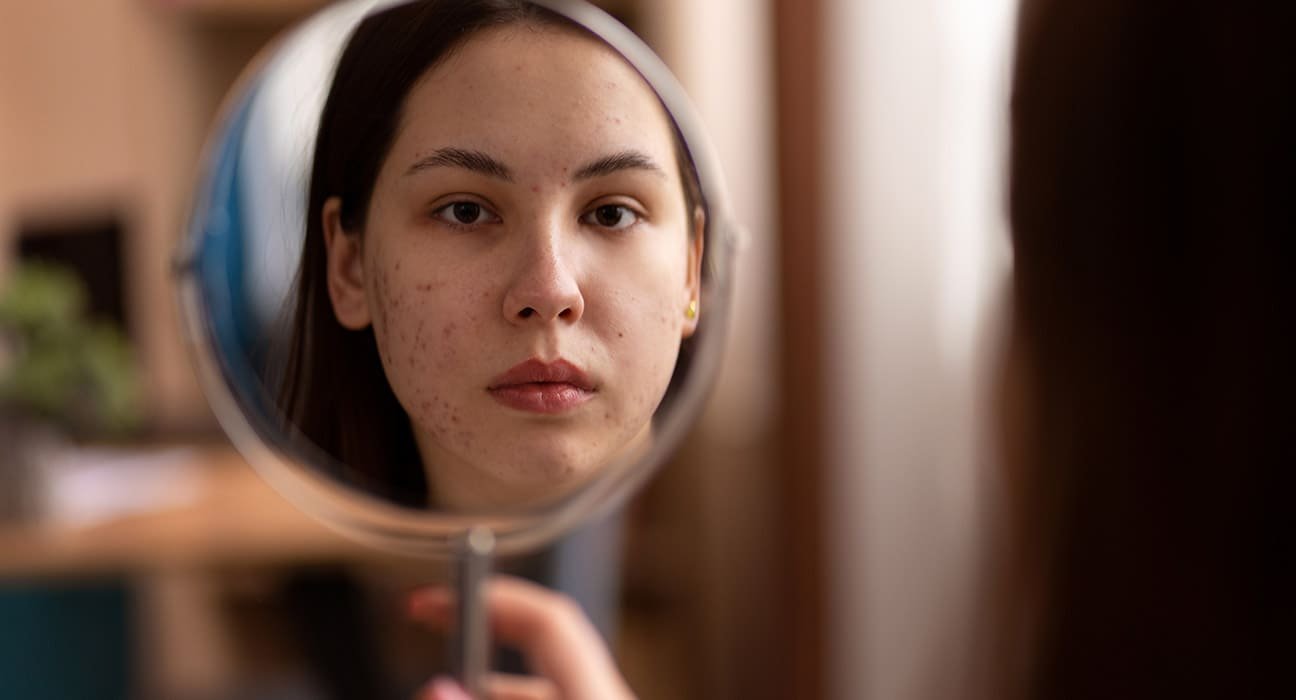Women, for centuries, have been told by men that they are “not up to the mark”. The first wave of the feminist movement can be traced back to the mid-1800s with the first formal effort being made in 1848 with the signing of the Declaration of Sentiments which called for women to be brought up to the same level as men through advocacy of multiple rights which included the right to vote. Women have constantly been compared to each other as well as the standards of society. They are constantly supposed to match up to whatever demand is put across by the society, to narrow it down, the patriarchal society. As of right now, women must live and learn to survive in a system that makes them question their worth and themselves over and over again. We must focus on the varying standards that are set, in particular beauty standards.
Read More: Mental Health and Women
The Unpredictable Nature Of Beauty Standards
Do you desire the same style of clothing you did ten years ago? Fashion is known for its ability to change, transform and align itself with the current global climate. Funnily enough, the same has been supposed for women, their appearances and in particular, their bodies. As has been cleverly put by the poet Rupi Kaur,
“I made change after change, on the road to perfection, but when I finally felt beautiful enough, the definition of beauty had suddenly changed.”
Let us highlight the major trends in “beauty” and their consequences:
Ancient Egypt (c. 1292-1069 B.C.):
You would find it interesting to find that the earlier we go back, the freer women used to be. Way back in ancient Egypt, beauty standards as such did not exist, rather they were based on how the majority of women looked which tended to be with longer braided hair and symmetrical faces. They also tended to have more freedom in a sex-positive society where their bodies and sex lives were not under the lens of a microscope. Consequently, women tended to enjoy more autonomy and could assert themselves in its entirety.
Read More: Top 10 Self-Help Books for Women to Read in 2024
Han Dynasty (c. 206 B.C.-220 A.D.):
The patriarchal Han Dynasty set beauty standards that were very far apart from the ‘average girl’ of that time. These included a thin body, cherry red lips, skin as white and pale as could be, long black hair and small feet. The practice of ‘foot binding’ has taken place in China which involves binding girls’ feet by thread or rope of some kind until the age of five so that they remain smaller in size. This obviously has a painful physical and psychological impact on young girls. The kind of features this standard demands is impossible to achieve for people of this descent, and this causes an inherent lack of self-worth.
Victorian England (c. 1837-1901):
This era wanted to highlight the feminine and maternal aspects of a woman. The ability to bear legitimate heirs was of major importance during this period. Women wore tight corsets to clench their waists until they could barely breathe. This was done to show an hourglass figure. Women also were demanded to have long silk hair which would represent their femininity. In this period, women were valued for nothing more than their looks and their virtue. It is historically noted that Queen Elizabeth I used to apply lead paint to hide spots from smallpox, similar practices were followed during this time.
Read More: How Media Influences Women’s Empowerment
Roaring Twenties (1920s):
In this era, women tended to downplay their feminine attributes, rather women with boyish bodies were preferred amongst the younger crowd. This was done to an extent where women wore bras that seemed to diminish their breasts rather than flaunting them. While choosing shorter hairstyles such as the classic bob has seemingly represented the freedom of expression for women, there was also a heavy emphasis on eye makeup which led to the cosmetic industry skyrocketing. To keep a curveless, extremely thin body, women delved into extreme diets and high-intensity exercise which often led to less nutrition intake and body dysmorphia.
Golden Age of Hollywood (1930s-1950s):

We have arrived at the beauty and fashion icon, Marilyn Monroe. This era is pretty much entirely defined by the hypersexualisation of Monroe. During this time, preferences included bigger bosoms and slimmer waists. Essentially, the look of a doll was desired. Women tended to engage more in outdoor activities and lower carb intake. While the diets were somewhat healthier, there was a lot more pressure on women to look a certain way than ever before precisely because of the constant media admiration of a particular body type.
Heroin Chic (1990s):
This might have been one of the most harmful eras of beauty standards. Women preferred to have thinner and more withdrawn bodies with paler skin. They were supposed to be unbelievably skinny to the point that their bones in certain areas must be visible. This, as the name suggests, led to more women partaking in drug abuse. Women used to smoke and use drugs such as heroin and cocaine to a harmful extent to achieve a particular body type.
Postmodern Beauty (c. 2000s- current):
These are the beauty standards that began at the beginning of this century and have continued till today with certain revisions but none major enough for a completely different era. These include curvier bodies but only in very specific ways. Bigger breasts and bigger behinds along with smaller waistlines and a flat stomach are preferred. This has led to an increase of breast augmentation centuries and the unrealistic element is larger here than ever since this standard requires very specific measurements to be ‘ideal’.
India has more or less followed Western beauty standards, especially post-colonisation. Even today, we attribute beauty characteristics to a prevalence of Caucasian features such as fairer skin, lighter eyes and hair as well as taller and slimmer bodies. The more one looks like a foreigner, the more they are considered beautiful. This has had major psychological implications, let us turn towards those.
Major Psychological Implications
Catching up to such standards has had a major psychological impact on young women. Research has indicated that 35% of young girls between the age of 13-19 report ‘often’ worrying about their body image. Only a very small percentage said that it does not affect distress. However, certain psychological disorders exist with the advent of body image issues:
Anorexia
Anorexia is an eating disorder characterized by an individual’s attempt to starve themselves or engage in exceedingly intense exercise to be thinner. It is caused by distorted perceptions of one’s body weight, appearance and so on. They continuously fear that they are becoming overweight which causes them to eat less to the extent that they would starve themselves for weeks. Anorexia nervosa is a very prevalent disorder among today’s youth. A survey conducted in India in 2018 has indicated that around 6.5% of adolescent girls have at least some symptoms of anorexia.
Bulimia

Bulimia is an eating disorder which takes place in two stages: binging and purging. People with this disorder tend to binge eat and then attempt to purge due to distorted perceptions of their bodies. It is potentially life-threatening. Binging involves the uncontrollable urge to eat irrationally large amounts of food. Then purging includes forcefully making oneself vomit or purge through the use of laxatives. Princess Diana has reportedly suffered through bulimia nervosa due to the pressures of royal life.
Body Dysmorphia
Body Dysmorphia is a psychological condition that is characterized by an individual’s unhealthy obsession with the flaws in their appearance. Such individuals tend to have a distorted perception of their bodies and go through a lot of discomfort and psychological distress due to this since they do not feel at one with their own bodies, This can further cause depersonalisation which is essentially a disconnect one feels from themselves. The prevalence of body dysmorphic disorder (BDD) is reported to be 1.5-2% globally.
Such disorders are becoming more and more prevalent and thus, one must be aware of them. While these tend to be more common amongst women, men also go through these. Thus, we must look at certain ways to cope with these.
How Do I Overcome?
While this issue is an inherent part of society since it has culminated in a fixture after so many years of the setting of such standards. As of late, young girls have been investing heavily in cosmetic and body augmentation surgeries simply to fit an ideal image society has set which is impossible to ever live up to. Thus, we have enlisted below certain coping strategies to deal with these:
1. Bettering Food Habits
There is no judgment surrounding losing weight. You can still attempt to lose weight or gain muscle while supporting the eradication of unrealistic beauty standards. Although, you must be cautious in doing so. The internet is a horrid place for dieting advice. Diets such as the 1200-1500 calorie diet (you must only consume 1200-1500 calories a day to be thin) are extremely unhealthy. Did you know you lose 1500 calories a day by just breathing? According to the National Health Survey of the United Kingdom, the recommended calorie intake for women is 2000-2500. Food is sustenance for your body. It is something you deserve, not something you have to earn.
2. The Healthier Side of Exercise
Exercise has been proven to be quite beneficial for one’s mental health. However, to achieve a particular body type, people tend to overdo it. Countless hours in the gym are only hampering you, they are not helping you. This can lead to a greater strain on the muscles, fatigue, increased blood pressure, and so on. One can achieve the necessary amount of exercise by simply accounting for 150 minutes of the week to exercise. Healthier exercises also pay attention towards mindful breathing and the release of endorphins which is the hormone that accounts for euphoria.
Read More: Why Is Exercise And Good Nutrition So Important For A Healthy Brain?
3. Lifting Up Others To Lift Up Yourself
In a BBC interview, following comments on a particular photo shoot of Emma Watson, she responded with an iconic quote, “Feminism is not a stick with which to beat other women. It’s about freedom.”
.@EmmaWatson on the controversy over her almost topless @VanityFair cover shoot. https://t.co/9kNDAV90w6 pic.twitter.com/Bc2b5JuVHE
— BBC News (World) (@BBCWorld) March 5, 2017
Extreme and radical feminists sometimes tend to shame women if they are not actively living up to the ‘feminist’ standards. For example, they may sometimes argue that women who attempt to lose weight to look a certain way, are doing so to please the eyes of men. However, this is incorrect. If feminism were this way, then it would again simply set a standard. Let others be who they want to be, and look as they wish to. Such movements can only survive when there is minimal infighting. Wearing makeup, having surgeries, gaining muscles, and sculpting abs are all free choices. Do not police anybody else’s body or clothing if you advocate for the same freedom. One for all and all for one.
4. Positive Affirmations:
This includes reminding ourselves that we are worthy of love and that we are valuable within ourselves without succumbing to any demands. Looking in the mirror and using statements such as ‘I am beautiful’, ‘I am worthy’, ‘I do not need to impress anyone’ and so on can actually help in the process of you believing these. Research conducted in 2016 using fMRIs has actually proven that self-affirmations activate brain systems that help in the deeper processing of information and thus tend to become a part of their belief system.
5. Trace The Insecurities:

Look at any women around you. Can you spot what she is insecure about? Well, neither can others about you. We believe that our insecurities are overpowering us and that everyone can see them so we try our best to hide them. This is not true. We notice our flaws more than others ever will. We need to realize that these insecurities trace back to something we could’ve experienced in the past. If we can identify this, we can correct this belief.
6. Self-Care:
Treat yourself the way you treat others. You must take care of yourself. Self-care can help you feel better about yourself and positively view your body. This can be done in one of many ways such as going on a solo date while wearing what you find most beautiful and comfortable, getting massages, doing facial care and other such remedies. These can help you in establishing a positive relationship with your body.
7. Focus On The Positive
A lot of our life goes by with us focusing solely on the negatives which should not be the case. You must learn to focus on the positives as well. A habit you can inculcate is to say something positive about yourself whenever you think of something negative. This can help you see yourself more clearly and it becomes a holistic view.
8. Self-Acceptance:
You must learn to accept yourself and love yourself in every way, shape and form. Such Self-acceptance can help you to overcome the unnecessary weightage and distress you hold in regard to your body. This is necessary on the road to Self-love.
Read More: Self Care: What It Is And What It Isn’t
Attempting to catch up to such unrealistic standards can make us question ourselves at every turn. We must constantly stop this disordered pattern of thinking and learn to accept ourselves as we are. We must stand together to battle such unrealistic body standards, this goes especially true for younger girls who are targeted more in regards to this. Empower, fight, and live.
References +
- Quotes about unrealistic standards. (n.d.). https://bookroo.com/quotes/unrealistic-standards
- Pruitt, S., & Pruitt, S. (2023, October 4). What are the four waves of feminism? HISTORY. https://www.history.com/news/feminism-four-waves
- Chowbey, P. (2015, March 17). Women’s Ideal Body Types across History. Dr. Pradeep Chowbey. https://www.chowbey.com/womens-ideal-body-types-across-history/
- Ewing, S. (2022, June 15). This is what diets and lifestyles were like in the 1950s. Metro. https://metro.co.uk/2022/06/15/this-is-what-diets-and-lifestyles-were-like-in-the-1950s-16826401/
- BEAUTY IDEAL OVER THE DECADES part 11: THE 20’s. (n.d.). IDEALIST STYLE. http://www.idealiststyle.com/blog/beauty-ideal-over-the-decades-part-11-the-20s
- Body image in childhood. (n.d.). Mental Health Foundation. https://www.mentalhealth.org.uk/explore-mental-health/articles/body-image-report-executive-summary/body-image-childhood
- Vaidyanathan, S., Kuppili, P. P., & Menon, V. (2019). Eating Disorders: An Overview of Indian research. Indian Journal of Psychological Medicine, 41(4), 311–317. https://doi.org/10.4103/ijpsym.ijpsym_461_18
- Website, N. (2023, October 25). Body dysmorphic disorder (BDD). nhs.uk. https://www.nhs.uk/mental-health/conditions/body-dysmorphia/
- Sindi, S. A., Alghamdi, M. K., Sindi, E. E., Bondagji, M. F., Baashar, D. S., Malibary, J. A., & Alkot, M. (2023). The prevalence and characteristics of body dysmorphic disorder among adults in Makkah City, Saudi Arabia. A Cross-Sectional study. Cureus. https://doi.org/10.7759/cureus.35316
- Website, N. (2023a, October 9). What should my daily intake of calories be? nhs.uk. https://www.nhs.uk/common-health-questions/food-and-diet/what-should-my-daily-intake-of-calories-be/
- What happens when you work out too much | Banner Health. (n.d.). https://www.bannerhealth.com/healthcareblog/advise-me/what-can-happen-to-your-body-when-you-work-out-too-much
- Cascio, C. N., O’Donnell, M. B., Tinney, F. J., Lieberman, M. D., Taylor, S. E., Strecher, V. J., & Falk, E. B. (2015). Self-affirmation activates brain systems associated with self-related processing and reward and is reinforced by future orientation. Social Cognitive and Affective Neuroscience, 11(4), 621–629. https://doi.org/10.1093/scan/nsv136













Leave feedback about this